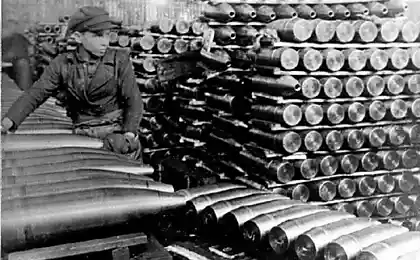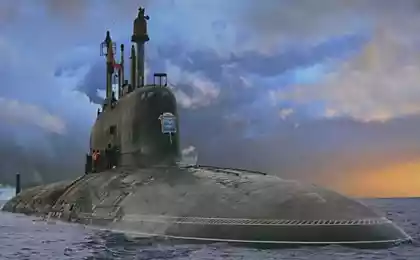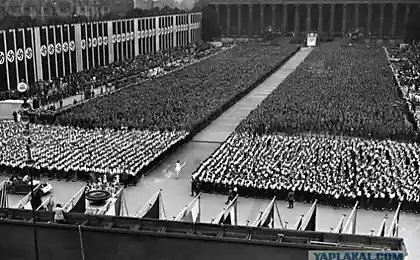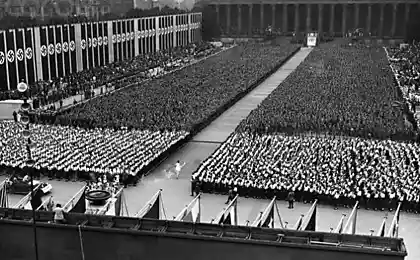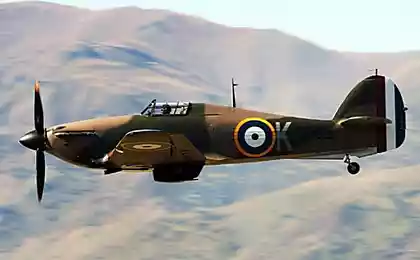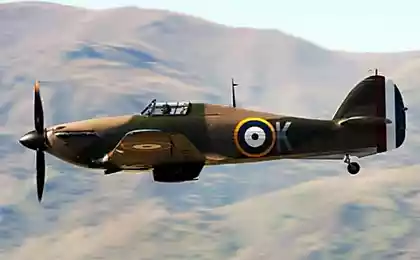1224
Superweapon Third Reich (11 photos)
The unrestrained onslaught of the Red Army, the Germans put the prospect of complete defeat in the next few years. "Thousand-year Reich" faltered and began to rapidly fall back, losing just conquered territories and piles of broken military equipment. It was at this point in the minds of the Nazi yubermenshey born convulsive imagination that the key to the salvation of the Reich - the technical superiority over the enemy. Ideas materialized in the form of unique projects of German designers - often very amusing but completely useless from a military point of view.
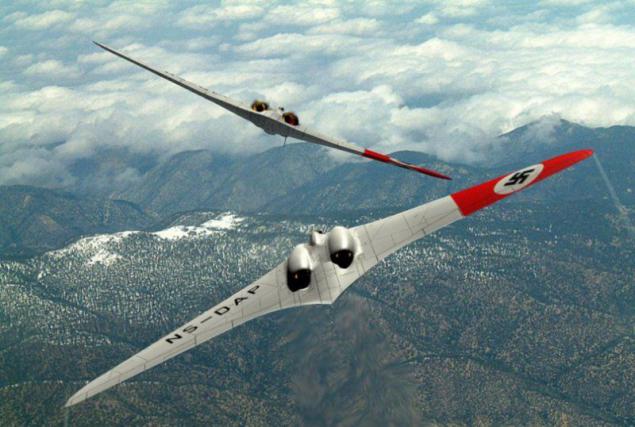
«vundervaffe" Germany did not save. On the contrary, only a closer and the collapse of the Nazis turned the idea of establishing "absolute weapon" a laughingstock for generations to come. Trying to get ahead of his time, not having the required level of technology development, it was not successful. Germany lost the war with a bang.
Today fascist "vundervaffe" devoted a lot of books. Most researchers admires the genius of German Engineers, at the same time forced to admit that the attempt to build a wonder weapon in that desperate situation looked frankly pointless undertaking. Worse, in accordance with the laws of Murphy, the highest priority is given to the most crazy and complex project "vundervaffe", implementation of which would not have the combined capacity of all countries of the world. The survivors from the mind of the occultist Reich leadership wasting precious resources. And while waiting for deliveries at the front simple and reliable weapon suitable for the early launch into production ...

Fighter-bomber Ho.229 (replica)
The situation with "vundervaffe" looks obvious way. But much more interesting is another question - what was the degree of innovation in the construction of the German craft? Can we speak of any technical superiority of the "Aryan race»?
In this review, I propose to look at the situation from an unusual angle. Even if the Germans were able to solve all the problems with the supply, improve the reliability of their "masterpieces" and launch new products in the series, nothing good out of this would have happened. The reason is simple: ahead of its time development engineers of the Third Reich at the time of its appearance ... outdated.
Aces of the Luftwaffe. Unknown about known
1944. The night the Berlin street, lamp, drugstore. The windows flickers dim light - it's not sleeping German engineers, Horten brothers. They design a stealth jet aircraft Ho.229.
In the neighborhood within the walls of a secret society Anenerbe discussed the possibility of creating flying saucers "Vril" and "Hanebu-2».
While the Germans indulged their unbridled imagination, high in the sky buzzed the invisible aircraft engines. Courier express the USSR - the United Kingdom followed his usual route.
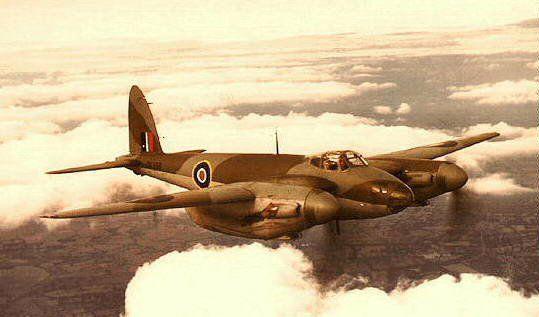
Speed De Havilland Mosquito bombers gained altitude of 10,000 meters and at speeds of over 600 km / h crossed the whole of Europe. Shoot down the "Mosquito" was almost impossible: according to statistics, this type of aircraft had a loss of 130 sorties!
Tselnoderevyannaya unique design makes them almost invisible to radar. And when the night hunters still able to detect "Mosquito", including station warning radar illumination "Monica." Bomber immediately changed course and disappeared in the darkness.
Needless to say, which brought inconvenience to the enemy reconnaissance and attack modification nesbivaemogo "Mosquito»!
The Germans had lost air superiority by the middle of the war. An attempt to restore the balance with "bullet" jets also failed completely.
The last hope was a German jet fighter Messerschmitt-262. Fritz, choking with delight, had planned to bring the rate of release Me.262 to 1,000 cars a month and fully re-equip its newest aircraft the Air Force. The first sortie Me.262 held July 25, 1944. From now on, the sky belonged to the Aryan "blond beast»!
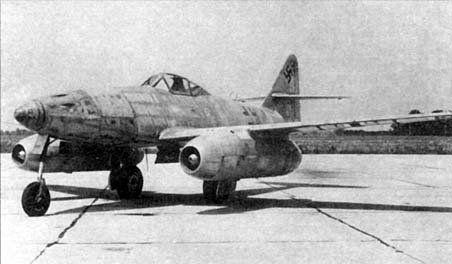
Me.262 Schwalbe («Swallow»)
But the joy was short-lived. Two days later, July 27, on the opposite side of the Channel rose machines, a hair's breadth similar to the German "swallow", but bore the insignia of the British Air Force.
"Gloster Meteor»!
Now it makes no sense to deny: the German "Swallow" as the British "Gloster Meteor" sample in 1944, were just demonstrators capacity jet aircraft. Combat application of both cars looked like a farce: the fascist "Schwalbe", whose heavenly song ended abruptly after 25 hours (this was the first jet engine life) and the British jet miracle that prohibit cross the lines (great results - 14 shot down by missiles V-1). < br />
The catastrophic lack of traction. Any wrong move control knob entailed the inevitable fire engine. Yes, with such "heroes" should stay away from the front line.

Gloster Meteor
The British hardly fought. German jet machines were used more actively, but also did not bring any appreciable benefit. Weak acceleration characteristics and low reliability due to the imperfections of their engines did Me.262 easy prey for enemy aircraft piston. American "Mustangs" ambushed the German airfields and shot en masse helpless "swallows" during their take-off or landing. February 19, 1945 one such rocket "waffle" was hit in a dogfight Ivan Kozhedub. Hero won an unusual victory at the normal aircraft La-7. In addition, the fight took place at high altitude, where "Schwalbe" has managed to gain its astounding speed.
The result of all experiments with jet aircraft was following.
German "vundervaffe" was thrown to the dustbin of history, along with the "thousand-year Reich." British "Gloster Meteor" was gradually brought to combat readiness and remained in service with the Air Force seventeen countries of the world until the early 70s.
Stories about the "vundervaffe" has registered strongly in the pages of the "yellow press". The public like mysterious stories about the German "flying saucers" flying bomb "V-1" ballistic missiles "V-2" and the missile firing range on the island. Peenemunde.
If we reject the fantasy of "saucers" that the Germans really have achieved notable success in the field of rocketry. However, there is not so obvious: the work on the subject of missile and conducted in other countries (the Soviet study group's Jet Propulsion (GIRD) - cradle of space exploration), but have not received high priority due to the absence at the time of accurate guidance systems. Without this idea of missile loses its meaning: the German crafts "V-2" were pure weapon of terror against the civilian population of the enemy. Their circular error probable (CEP) barely allowed them to get into the big cities. Finally, the first liquid rocket engine was built by an American engineer Robert Goddard in 1926
Much more surprising, which gained fame "V-1" - a primitive cruise missile with a pulse jet engine and the inertial guidance system. Simply put, the unmanaged pig flying a certain time in a given direction and then drops the signal timing. German flying bomb outdated even before their birth. During World War II flying is much more "advanced" design, the remaining unjustly forgotten and buried under the ashes of time.
German development was cheap crafts on the background of the American drone shock "Interstate» TDR-1. Even before the attack on Pearl Harbor cowardly Yankees thinking on how to break through the steadily increasing air defense system ships without endangering the lives and health of its pilots. The decision prompted Russian immigrant Vladimir Zworykin ("father" television), who managed to create a small-sized television camera "Block 1" with sufficiently high resolution and the possibility of broadcasting images over a distance. The entire system is placed in a case with dimensions 66h20h20 cm. Weight with the power supply was 44 kg. Angle of the camera - to 35 °. Resolution - 350 lines. Transmission speed video - 40 frames per second.

Fighting robot Interstate TDR-1. Behind - the control plane ("Avenger» TBM-1C)
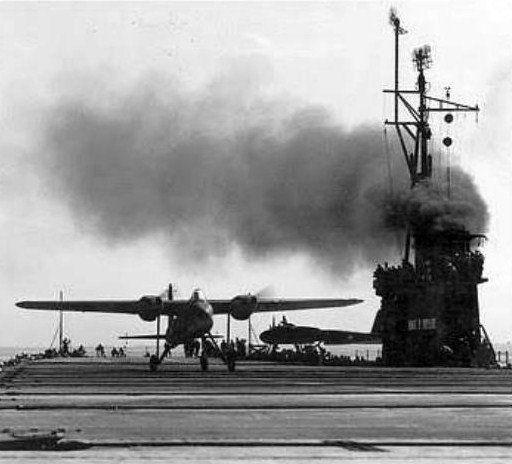
UAV on the deck of an aircraft carrier training "Sable»
In contrast to the German anti-ship missile managed Hs.293, which required her visual observation aboard the bomber carrier Zvorykina system provides reliable remote control at a distance of 50 miles. The second important difference "Interstate" from the German "V-1" and "Henschel-293" was his repeated use: in case of a successful exit from the drone attacks returned to the carrier or land-based airfield.
By 1943, the leadership of the US Navy counted on to generate 18 squadrons of unmanned torpedo bombers (more than 1,000 drums drone aircraft and 162 controls). Alas, by the time the Japanese fleet has suffered heavy losses, and completely lost the initiative. The need for sea bespilotnike disappeared. Total time to build a 189 UAV "Interstate", which were used for the destruction of the Japanese anti-aircraft batteries in the final stages of the war.
German designers have lost the battle for heaven
Despite his endless fantasies about flying saucers and suborbital bombers, the Nazis did not manage to build a strategic bomber capable of striking the United States. Over the work of the project Amerika Bomber unsuccessfully worked Junkers, Messerschmitt, and Kurt Tank. Alas, all created artefacts - Ju.390, Fw.300, Me.264, Ta.400 - does not even reach the level of the US "Superfortress».
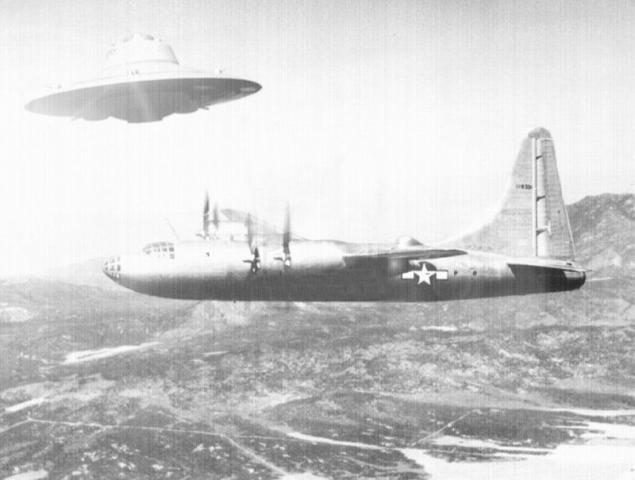
The pilots of the Luftwaffe had no G-suit, such "Franks» Mk.I and Mk.II (used by pilots of British "Spitfire"), or G-1 (used by the Americans to "Mustang»).
The Germans could not be heavy fighter-bombers such as "Thunderbolt" or "Dogs". Although obsessive search for "miracle weapon", the Nazis did not manage to create an aircraft engine, comparable in power with "Napier Sabre" (2200 hp, these engines were equipped with British "Tempest") or double-star "Pratt & Whitney» R2800 (Power over 2,500 hp).
Third Reich completely "blew" the arms race other developed countries. Thank German engineering is largely undeserved. In other countries, they created no less formidable and sophisticated weapons and equipment. Alas, these constructions remained almost unknown to the general public. In contrast to the German unrealized projects, the victorious countries were in no hurry to disclose details of its secret developments.
Everyone has heard about the work carried out in Germany to create anti-aircraft missile systems ("Wasserfall", "Schmetterling", "Rayntohter"). But how many know of the existence of US anti-aircraft complex SAM-N-2 "Lark»?
The first contract to produce pre-production run of 100 anti-aircraft missiles was signed in March 1945 Key Features SAM "Lark": effective range of 55 km. Marching rocket speed 0, 85M. Warhead weight 45 kg - more than enough to capture piston aircraft. Rockets company "Fairchild" using a combination guidance system (radio command midcourse management and end-stage semi-active). Competitors of the company "Consolidated" use a different scheme to "saddled beam" and an active homing on the end part with the help of the small-sized radar AN / APN-23.
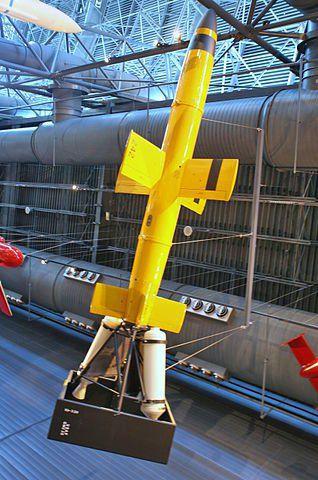
After becoming acquainted with these facts about the German fairy tale "wonder weapons" do not cause anything but boredom.
White Army, Black Baron
One can not deny the importance of technical research and the desire to improve the performance of military equipment. But fun with the creation of a "miracle weapon" had little to do with the real needs of the armed forces and successes on the front. The combat readiness of the Army, Air Force and Navy determined by their combat experience, coordinated action and adapted to the conditions in which they had to fight. Seen from this standpoint the Soviet rear and front accomplished a feat. The Soviet Union turned into a fighting machine, perfectly adapted to the conditions of the Soviet-German front.
The horrors of the first months of the war, disorderly retreat, the loss of an important industrial center, a violation of industrial chains, evacuation facilities with their "spray" on the vast expanses of the country. The lack of highly skilled labor. Low technical literacy among the personnel of the Red Army (in the words of Mikhail Kalashnikov, "soldiers academies did not finish"). The total backlog of Soviet industry from leading countries of the world, due to belated industrialization (for which a special thank you tsarist regime). All this made the Soviet military-industrial complex unlike any of the MIC foreign countries.
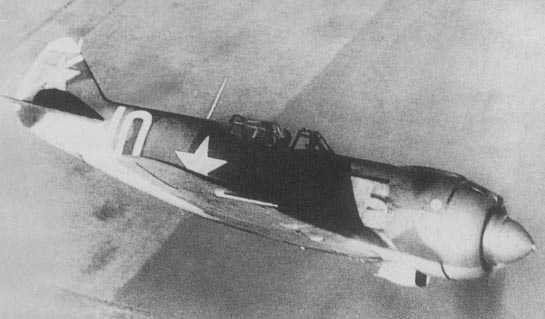
Mighty La-5FN. Fighters of this type almost nothing inferior to the best foreign fighters with air-cooled engines (such as the Focke-Wolf 190, or the British "Hawker Tempest»)
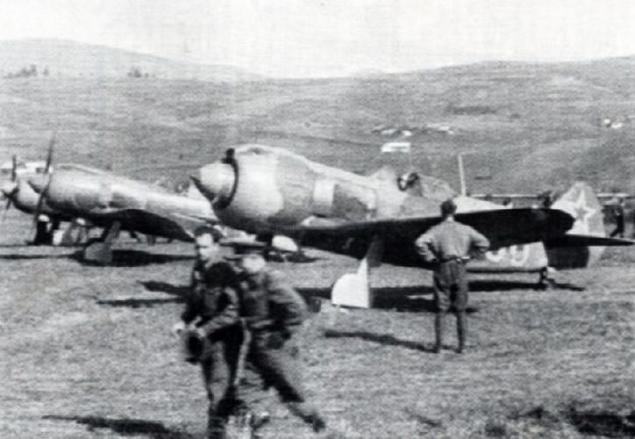
No illusions harbored. The war against fascism will cost heavy losses to our country. Military equipment should be as cheap and simplified - so much so that sometimes the damaged tank was easier to quit than to transport it to the Vistula River in the Urals. At the same time in all of its combat characteristics of Soviet military equipment it had to comply with foreign counterparts. Only such a technique could produce our military-industrial complex. And only such a technique could fight Russian soldiers.
... Experts LII, and the Air Force Institute TsAGI carefully examined the newcomer "Mosquito" B.IV (at number DK296) and came to the conclusion that in the construction of British aircraft, there are no secrets. High LTH provided thanks to the excellent engines and exceptionally high quality manufacturing wooden parts of the fuselage and wings. Production of "Mosquito" in the USSR is impossible - it is neither the time nor the energy nor the proper qualifications of workers.
Instead vykleivat three-layer "sandwich" of balsa and conduct a thorough polishing of the surface, it was easier to "nastrogat" couple "Pawns" (Pe-2) and immediately throw them into battle, to meet the bestial hordes of Nazis. Pe-2 yielded little "mosquito" in the specific conditions of the Soviet-German front.
Healthy austerity, mass and traditional Russian ingenuity - that this was our miracle weapon that allowed the Red Army to reach Berlin.
Author Oleg Kaptsov

«vundervaffe" Germany did not save. On the contrary, only a closer and the collapse of the Nazis turned the idea of establishing "absolute weapon" a laughingstock for generations to come. Trying to get ahead of his time, not having the required level of technology development, it was not successful. Germany lost the war with a bang.
Today fascist "vundervaffe" devoted a lot of books. Most researchers admires the genius of German Engineers, at the same time forced to admit that the attempt to build a wonder weapon in that desperate situation looked frankly pointless undertaking. Worse, in accordance with the laws of Murphy, the highest priority is given to the most crazy and complex project "vundervaffe", implementation of which would not have the combined capacity of all countries of the world. The survivors from the mind of the occultist Reich leadership wasting precious resources. And while waiting for deliveries at the front simple and reliable weapon suitable for the early launch into production ...

Fighter-bomber Ho.229 (replica)
The situation with "vundervaffe" looks obvious way. But much more interesting is another question - what was the degree of innovation in the construction of the German craft? Can we speak of any technical superiority of the "Aryan race»?
In this review, I propose to look at the situation from an unusual angle. Even if the Germans were able to solve all the problems with the supply, improve the reliability of their "masterpieces" and launch new products in the series, nothing good out of this would have happened. The reason is simple: ahead of its time development engineers of the Third Reich at the time of its appearance ... outdated.
Aces of the Luftwaffe. Unknown about known
1944. The night the Berlin street, lamp, drugstore. The windows flickers dim light - it's not sleeping German engineers, Horten brothers. They design a stealth jet aircraft Ho.229.
In the neighborhood within the walls of a secret society Anenerbe discussed the possibility of creating flying saucers "Vril" and "Hanebu-2».
While the Germans indulged their unbridled imagination, high in the sky buzzed the invisible aircraft engines. Courier express the USSR - the United Kingdom followed his usual route.

Speed De Havilland Mosquito bombers gained altitude of 10,000 meters and at speeds of over 600 km / h crossed the whole of Europe. Shoot down the "Mosquito" was almost impossible: according to statistics, this type of aircraft had a loss of 130 sorties!
Tselnoderevyannaya unique design makes them almost invisible to radar. And when the night hunters still able to detect "Mosquito", including station warning radar illumination "Monica." Bomber immediately changed course and disappeared in the darkness.
Needless to say, which brought inconvenience to the enemy reconnaissance and attack modification nesbivaemogo "Mosquito»!
The Germans had lost air superiority by the middle of the war. An attempt to restore the balance with "bullet" jets also failed completely.
The last hope was a German jet fighter Messerschmitt-262. Fritz, choking with delight, had planned to bring the rate of release Me.262 to 1,000 cars a month and fully re-equip its newest aircraft the Air Force. The first sortie Me.262 held July 25, 1944. From now on, the sky belonged to the Aryan "blond beast»!

Me.262 Schwalbe («Swallow»)
But the joy was short-lived. Two days later, July 27, on the opposite side of the Channel rose machines, a hair's breadth similar to the German "swallow", but bore the insignia of the British Air Force.
"Gloster Meteor»!
Now it makes no sense to deny: the German "Swallow" as the British "Gloster Meteor" sample in 1944, were just demonstrators capacity jet aircraft. Combat application of both cars looked like a farce: the fascist "Schwalbe", whose heavenly song ended abruptly after 25 hours (this was the first jet engine life) and the British jet miracle that prohibit cross the lines (great results - 14 shot down by missiles V-1). < br />
The catastrophic lack of traction. Any wrong move control knob entailed the inevitable fire engine. Yes, with such "heroes" should stay away from the front line.

Gloster Meteor
The British hardly fought. German jet machines were used more actively, but also did not bring any appreciable benefit. Weak acceleration characteristics and low reliability due to the imperfections of their engines did Me.262 easy prey for enemy aircraft piston. American "Mustangs" ambushed the German airfields and shot en masse helpless "swallows" during their take-off or landing. February 19, 1945 one such rocket "waffle" was hit in a dogfight Ivan Kozhedub. Hero won an unusual victory at the normal aircraft La-7. In addition, the fight took place at high altitude, where "Schwalbe" has managed to gain its astounding speed.
The result of all experiments with jet aircraft was following.
German "vundervaffe" was thrown to the dustbin of history, along with the "thousand-year Reich." British "Gloster Meteor" was gradually brought to combat readiness and remained in service with the Air Force seventeen countries of the world until the early 70s.
Stories about the "vundervaffe" has registered strongly in the pages of the "yellow press". The public like mysterious stories about the German "flying saucers" flying bomb "V-1" ballistic missiles "V-2" and the missile firing range on the island. Peenemunde.
If we reject the fantasy of "saucers" that the Germans really have achieved notable success in the field of rocketry. However, there is not so obvious: the work on the subject of missile and conducted in other countries (the Soviet study group's Jet Propulsion (GIRD) - cradle of space exploration), but have not received high priority due to the absence at the time of accurate guidance systems. Without this idea of missile loses its meaning: the German crafts "V-2" were pure weapon of terror against the civilian population of the enemy. Their circular error probable (CEP) barely allowed them to get into the big cities. Finally, the first liquid rocket engine was built by an American engineer Robert Goddard in 1926
Much more surprising, which gained fame "V-1" - a primitive cruise missile with a pulse jet engine and the inertial guidance system. Simply put, the unmanaged pig flying a certain time in a given direction and then drops the signal timing. German flying bomb outdated even before their birth. During World War II flying is much more "advanced" design, the remaining unjustly forgotten and buried under the ashes of time.
German development was cheap crafts on the background of the American drone shock "Interstate» TDR-1. Even before the attack on Pearl Harbor cowardly Yankees thinking on how to break through the steadily increasing air defense system ships without endangering the lives and health of its pilots. The decision prompted Russian immigrant Vladimir Zworykin ("father" television), who managed to create a small-sized television camera "Block 1" with sufficiently high resolution and the possibility of broadcasting images over a distance. The entire system is placed in a case with dimensions 66h20h20 cm. Weight with the power supply was 44 kg. Angle of the camera - to 35 °. Resolution - 350 lines. Transmission speed video - 40 frames per second.

Fighting robot Interstate TDR-1. Behind - the control plane ("Avenger» TBM-1C)

UAV on the deck of an aircraft carrier training "Sable»
In contrast to the German anti-ship missile managed Hs.293, which required her visual observation aboard the bomber carrier Zvorykina system provides reliable remote control at a distance of 50 miles. The second important difference "Interstate" from the German "V-1" and "Henschel-293" was his repeated use: in case of a successful exit from the drone attacks returned to the carrier or land-based airfield.
By 1943, the leadership of the US Navy counted on to generate 18 squadrons of unmanned torpedo bombers (more than 1,000 drums drone aircraft and 162 controls). Alas, by the time the Japanese fleet has suffered heavy losses, and completely lost the initiative. The need for sea bespilotnike disappeared. Total time to build a 189 UAV "Interstate", which were used for the destruction of the Japanese anti-aircraft batteries in the final stages of the war.
German designers have lost the battle for heaven
Despite his endless fantasies about flying saucers and suborbital bombers, the Nazis did not manage to build a strategic bomber capable of striking the United States. Over the work of the project Amerika Bomber unsuccessfully worked Junkers, Messerschmitt, and Kurt Tank. Alas, all created artefacts - Ju.390, Fw.300, Me.264, Ta.400 - does not even reach the level of the US "Superfortress».

The pilots of the Luftwaffe had no G-suit, such "Franks» Mk.I and Mk.II (used by pilots of British "Spitfire"), or G-1 (used by the Americans to "Mustang»).
The Germans could not be heavy fighter-bombers such as "Thunderbolt" or "Dogs". Although obsessive search for "miracle weapon", the Nazis did not manage to create an aircraft engine, comparable in power with "Napier Sabre" (2200 hp, these engines were equipped with British "Tempest") or double-star "Pratt & Whitney» R2800 (Power over 2,500 hp).
Third Reich completely "blew" the arms race other developed countries. Thank German engineering is largely undeserved. In other countries, they created no less formidable and sophisticated weapons and equipment. Alas, these constructions remained almost unknown to the general public. In contrast to the German unrealized projects, the victorious countries were in no hurry to disclose details of its secret developments.
Everyone has heard about the work carried out in Germany to create anti-aircraft missile systems ("Wasserfall", "Schmetterling", "Rayntohter"). But how many know of the existence of US anti-aircraft complex SAM-N-2 "Lark»?
The first contract to produce pre-production run of 100 anti-aircraft missiles was signed in March 1945 Key Features SAM "Lark": effective range of 55 km. Marching rocket speed 0, 85M. Warhead weight 45 kg - more than enough to capture piston aircraft. Rockets company "Fairchild" using a combination guidance system (radio command midcourse management and end-stage semi-active). Competitors of the company "Consolidated" use a different scheme to "saddled beam" and an active homing on the end part with the help of the small-sized radar AN / APN-23.

After becoming acquainted with these facts about the German fairy tale "wonder weapons" do not cause anything but boredom.
White Army, Black Baron
One can not deny the importance of technical research and the desire to improve the performance of military equipment. But fun with the creation of a "miracle weapon" had little to do with the real needs of the armed forces and successes on the front. The combat readiness of the Army, Air Force and Navy determined by their combat experience, coordinated action and adapted to the conditions in which they had to fight. Seen from this standpoint the Soviet rear and front accomplished a feat. The Soviet Union turned into a fighting machine, perfectly adapted to the conditions of the Soviet-German front.
The horrors of the first months of the war, disorderly retreat, the loss of an important industrial center, a violation of industrial chains, evacuation facilities with their "spray" on the vast expanses of the country. The lack of highly skilled labor. Low technical literacy among the personnel of the Red Army (in the words of Mikhail Kalashnikov, "soldiers academies did not finish"). The total backlog of Soviet industry from leading countries of the world, due to belated industrialization (for which a special thank you tsarist regime). All this made the Soviet military-industrial complex unlike any of the MIC foreign countries.

Mighty La-5FN. Fighters of this type almost nothing inferior to the best foreign fighters with air-cooled engines (such as the Focke-Wolf 190, or the British "Hawker Tempest»)

No illusions harbored. The war against fascism will cost heavy losses to our country. Military equipment should be as cheap and simplified - so much so that sometimes the damaged tank was easier to quit than to transport it to the Vistula River in the Urals. At the same time in all of its combat characteristics of Soviet military equipment it had to comply with foreign counterparts. Only such a technique could produce our military-industrial complex. And only such a technique could fight Russian soldiers.
... Experts LII, and the Air Force Institute TsAGI carefully examined the newcomer "Mosquito" B.IV (at number DK296) and came to the conclusion that in the construction of British aircraft, there are no secrets. High LTH provided thanks to the excellent engines and exceptionally high quality manufacturing wooden parts of the fuselage and wings. Production of "Mosquito" in the USSR is impossible - it is neither the time nor the energy nor the proper qualifications of workers.
Instead vykleivat three-layer "sandwich" of balsa and conduct a thorough polishing of the surface, it was easier to "nastrogat" couple "Pawns" (Pe-2) and immediately throw them into battle, to meet the bestial hordes of Nazis. Pe-2 yielded little "mosquito" in the specific conditions of the Soviet-German front.
Healthy austerity, mass and traditional Russian ingenuity - that this was our miracle weapon that allowed the Red Army to reach Berlin.
Author Oleg Kaptsov
From Valve: the biggest prize in the history of eSports
Mysterious discovery, the origin of which is still unknown (17 photos)

